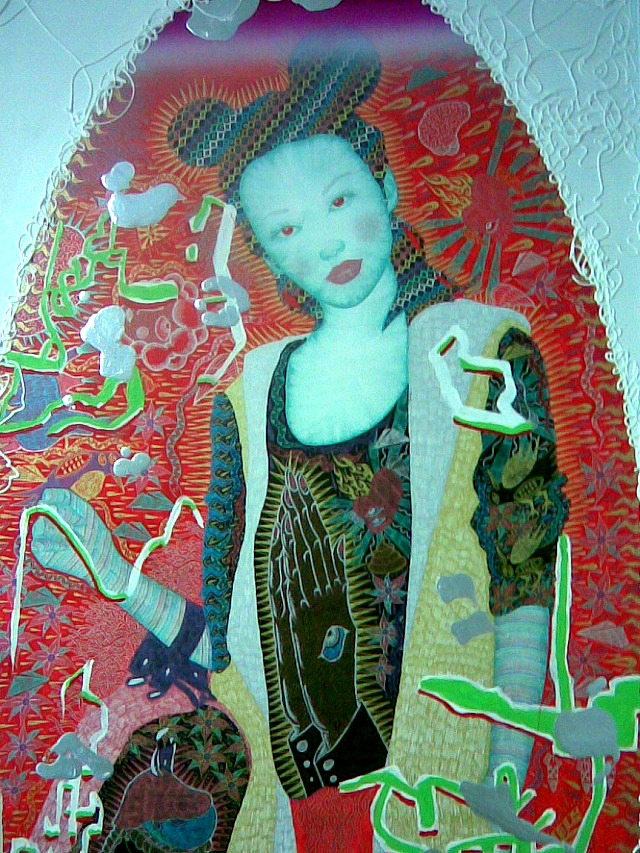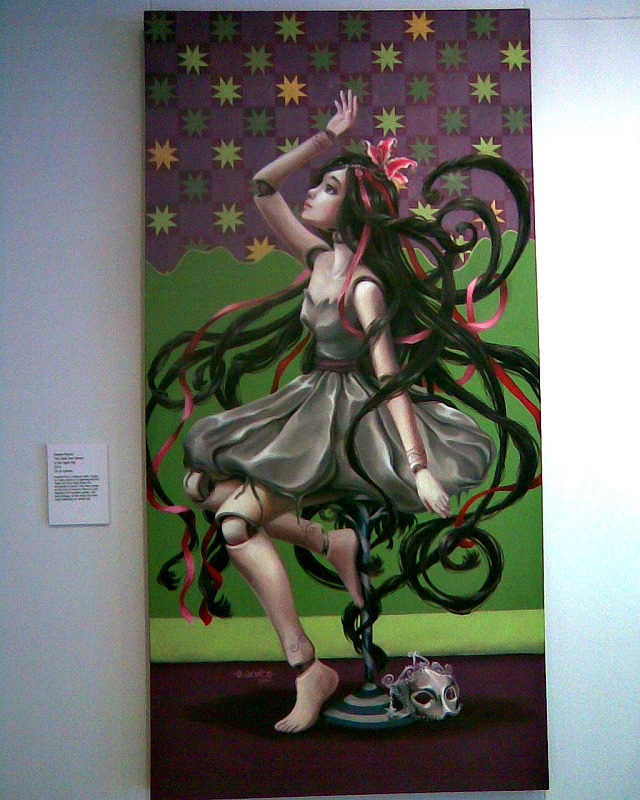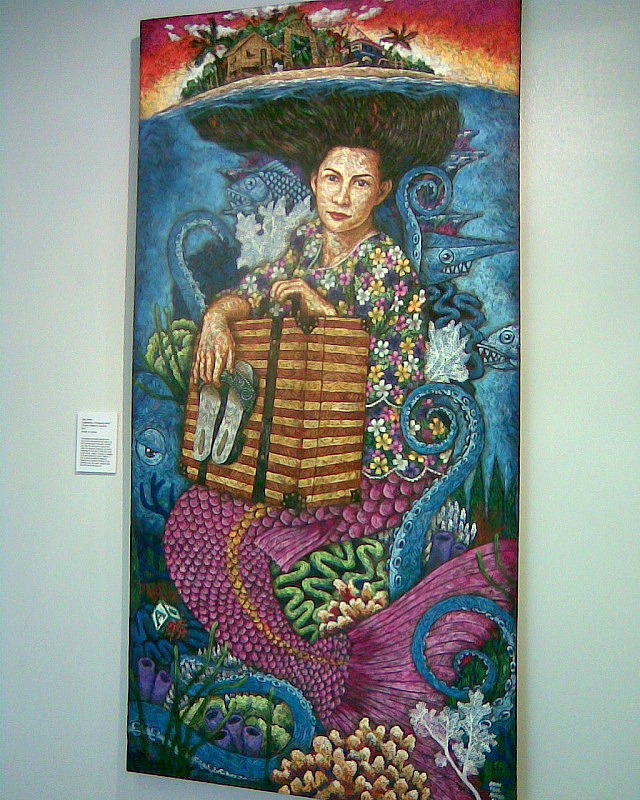Filtered By: Lifestyle
Lifestyle
Art review: The stories we tell: CANVAS’ ‘Filipino Myths and Legends’
Text and photos by RINA ANGELA CORPUS
“We are the stories we tell ourselves,” said Indian filmmaker Shekhar Kapur.
And in the re-telling of our stories, our world is re-created.

Detail of 'Half Day: Mananaggal' by Dexter Sy
Sixty-five artworks by various Filipino artists are showcased, with the original works displayed at the UP Vargas Museum, while their banner counterparts are hoisted along the acacia-lined academic oval of UP Diliman.
Artists of various stylistic persuasions and media brought their own interpretations to the exhibit’s theme, which aims to bring us back to our rich and storied mythologies. While some artists simply re-interpreted our old tales as we have known them, there were others that connected the tropes of Philippine legends with contemporary issues and concerns.
Take LJ Ablola Sy’s “Sirena,” a monochromatic work using acrylic on paper whose subject zooms in on the image of two men holding hands amidst a brown mass of humanity. In his artist’s statement, he reveals how the name of the mythical sea creature is also a word used in contemporary times to denote gay men. The work’s bias is obviously towards appropriating one of the more popular creatures of our mythologies towards raising awareness on how language is very much an important element in the gender discourse of our times.
Meantime, Dexter Sy’s “Half Day: Manananggal” shows a profile of an Asian woman with a curious Mickey Mouse headdress, with a missing lower torso—even as she is bedecked by rich fabrics of assorted patterns. It is a conspicuous allusion to the half-bodied female monster of Philippine mythology, the manananggal, but the artist gave it a modern twist by connecting her imagery with the modern-day social climber, who wears various masks and costumes as she makes her way into society’s upper echelons.

'The Deity that Shines in the Night' by Guada Ramos
Jhom Centeno’s “Kapre sa Syudad,” meantime, is an intermedia work showing the full-bodied image of a squatting and smoking man reminiscent of the folkloric kapre, a large and hairy male figure that is believed to reside in trees. In the painting, Centeno likens the kapre to the decrepit beggar of our urban streets.
Light is also cast upon creatures of a more benevolent nature in the works of other artists.
One of them, which stands out for its playful charm, is Liza Flores’ “Magyawen, Goddess of the Sea and Underworld.” The work uniquely employs cut paper on wood, reminiscent of a diorama or even a children’s pop-up picture book. Flores’ layering of flowing organic shapes using cut paper and embossed in wood gives life to the profile of a lesser-known Visayan goddess of the sea, as she is shown holding a conch shell, while fishes spring and hover around her gentle mien.
Guada Ramos’ “The Deity that Shines in the Night Sky” equally champions a Visayan female deity, Lisuga, who was known to have been struck by lightning that broke her silver-colored body into a thousand pieces that became the stars in the sky. The work is intriguingly rendered like a Japanese anime character—perhaps cluing us into the artist’s generational influence. Ligusa appears as a fragile mannequin sporting a short, silvery dress, while green and orange stars bedeck the wallpaper of the room that contains her.
Another eye-catching work is Chloe Dellosa’s “Dama’s Scent,” an acrylic on canvas painting that uses monochrome dark greens, greys and blacks as it plays on the legend of the aromatic flower, the dama de noche. Using transparent geometric shapes to configure the contours of a lady and a man’s face, it shows us a glimpse of the bitter story of how a lady named Dama once left her greedy and vicious husband, and turned into the fragrant night flower whose scent haunted her husband after her demise.

'Paglalakbay ni Dalagang Bukid' by Japs Antido
Using tropical colors of deep blues, reds and browns, the work proffers a surrealist portrait of a mermaid as she clutches a suitcase and a pair of wooden clogs on her lap while submerged under a sea world profuse with exotic creatures. Her long, black hair flows upwards, as if to hold afloat a small island that is filled with the signifiers of the traditional Philippine barrio: coconut trees, bahay kubo, festive banderitas, a jeepney.
The artist’s statement sheds light on this phantasmagorical re-imagining, as he states how the maiden/mermaid signifies for him the modern Overseas Filipino Worker, who leaves her motherland and the abundant traditions of her own culture.
More established artists such as printmaker and installation artist Imelda Cajipe Endaya and sculptor Rey Paz Contreras also contributed their works to this collection.
It is reassuring to see the tarpaulin versions of these works spread around the Diliman oval, piquing the interest and curiosity of joggers and passersby. At best, the exhibit makes art a tad more accessible to the public, but with an added value in that it allows viewers to re-think and re-imagine how our stories and legends may still be a relevant resource to help us re-cast and re-make their significance in contemporary thought and culture. — BM, GMA News
“Filipino Myths and Legends” can be seen at the UP Vargas Museum and around the UP Diliman oval until July 15. Call 928-1927 for information.
More Videos
Most Popular



